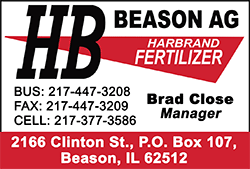Federal Reserve cuts its key rate by a quarter-point but envisions fewer
reductions next year
 Send a link to a friend
Send a link to a friend
 [December 19, 2024] By
CHRISTOPHER RUGABER [December 19, 2024] By
CHRISTOPHER RUGABER
WASHINGTON (AP) — The Federal Reserve cut its key interest rate
Wednesday by a quarter-point — its third cut this year — but also
signaled that it expects to reduce rates more slowly next year than it
previously envisioned, mostly because of still-elevated inflation.
The Fed’s 19 policymakers projected that they will cut their benchmark
rate by a quarter-point just twice in 2025, down from their estimate in
September of four rate cuts. Their new projections suggest that
consumers may not enjoy much lower rates next year for mortgages, auto
loans, credit cards and other forms of borrowing.
The central bank's expectation of just two rate cuts in 2025 rattled
Wall Street, sending stock prices plummeting in the worst day for the
market in four months. The Dow Jones Industrial Average closed down more
than 1,100 points, roughly 2.5%. The Nasdaq composite was hit worse: It
sank about 3.5% Wednesday. Higher interest rates can slow business
expansion.
Speaking at a news conference, Chair Jerome Powell underscored that
policymakers are slowing their rate reductions as their benchmark rate
nears a level that policymakers refer to as “neutral” — the level that
is thought to neither spur nor hinder the economy.
Wednesday's projections suggest that the policymakers think they may be
close to that level. Their benchmark rate stands at 4.3% after the
latest rate cut, which followed a steep half-point reduction in
September and a quarter-point cut last month.

“I think that a slower pace of (rate) cuts really reflects both the
higher inflation readings we’ve had this year and the expectations that
inflation will be higher" in 2025, Powell said. "We’re closer to the
neutral rate, which is another reason to be cautious about further
moves.”
Blerina Uruci, chief economist at T. Rowe Price, said the tone of
Powell's news conference was surprisingly “hawkish,” meaning that it
seemed to favor maintaining relatively high rates.
Uruci noted that Powell said the Fed's decision Wednesday to reduce its
benchmark rate by a quarter-point was a “closer call,” indicating that
there was opposition to the move. Indeed, four officials supported
keeping rates unchanged Wednesday, according to the projections. Not all
19 policymakers have a vote at each meeting. One — Beth Hammack, head of
the Federal Reserve Bank of Cleveland — voted against the rate cut
because she favored keeping rates unchanged.
“The committee might be quite divided at this point," Uruci said. "And
we have a growing hawkish contingent.”
At his news conference, Powell acknowledged that at least some Fed
officials have begun to assess the potential effects of President-elect
Donald Trump's policies on the economy and inflation. The Fed chair
noted that some policymakers think that since the election, the future
path of inflation has become harder to gauge. Trump's threats to impose
tariffs on all imports and to engage in mass deportations of migrants
could worsen inflation next year.
“It’s kind of common-sense thinking that when the path is uncertain, you
go a little bit slower,” Powell said. “It’s not unlike driving on a
foggy night or walking into a dark room with furniture. Just slow down.”
This year’s Fed rate reductions have marked a reversal after more than
two years of high rates, which largely helped tame inflation but also
made borrowing painfully expensive for American consumers.

[to top of second column] |

Federal Reserve Board Chairman Jerome Powell speaks during a news
conference at the Federal Reserve, Wednesday, Dec. 18, 2024, in
Washington. (AP Photo/Jacquelyn Martin)
 But now, the Fed is facing a variety
of challenges as it seeks to complete a “soft landing” for the
economy, whereby high rates manage to curb inflation without causing
a recession. Chief among them is that inflation remains sticky:
According to the Fed’s preferred gauge, annual “core” inflation,
which excludes the most volatile categories, was 2.8% in October.
That is still persistently above the central bank’s 2% target.
At the same time, the economy is growing briskly,
which suggests that higher rates haven’t much restrained the
economy. As a result, some economists — and some Fed officials —
have argued that borrowing rates shouldn’t be lowered much more for
fear of overheating the economy and re-igniting inflation.
On the other hand, the pace of hiring has cooled significantly since
2024 began, a potential worry because one of the Fed’s mandates is
to achieve maximum employment.
“We don’t think we need further cooling in the labor market to get
inflation below 2%,” Powell said at his news conference.
The unemployment rate, while still low at 4.2%, has risen nearly a
full percentage point in the past two years. Concern over rising
unemployment contributed to the Fed’s decision in September to cut
its key rate by a larger-than-usual half point.
Asked why the central bank envisions any rate cuts in 2025 given
still-elevated inflation, Powell noted that the Fed's latest
projections “have core inflation coming down to 2.5% next year."
“That would be significant progress,” he said. “We’d be seeing
meaningful progress to get inflation down to that level.”
The Fed chair added: “We and most other forecasters still feel that
we are on track to get down to 2%. It might take a year or two from
here.”
Trump has proposed a range of tax cuts — on Social Security
benefits, tipped income and overtime income — as well as a
scaling-back of regulations. Collectively, these moves could
stimulate growth. At the same time, Trump has threatened to impose a
variety of tariffs and to seek mass deportations of migrants, which
could accelerate inflation.

Powell acknowledged that Fed officials are seeking "to understand
ways tariffs can affect inflation and the economy and how to think
about that.”
The Fed's uncertainty about the economy's future path was
underscored by the quarterly economic projections the Fed issued
Wednesday. The policymakers now expect overall inflation, as
measured by their preferred gauge, to rise slightly from 2.3% now to
2.5% by the end of 2025. That is far below its peak of 7.2% in June
2022.
Even so, the prospect of slightly higher inflation makes it harder
for the Fed to reduce borrowing costs because high interest rates
are its principal weapon against inflation.
“From here, it’s a new phase," Powell said, "and we’re going to be
cautious about new cuts.”
___
AP Business Writer Alex Veiga contributed to this report from Los
Angeles.
All contents © copyright 2024 Associated Press. All rights reserved |